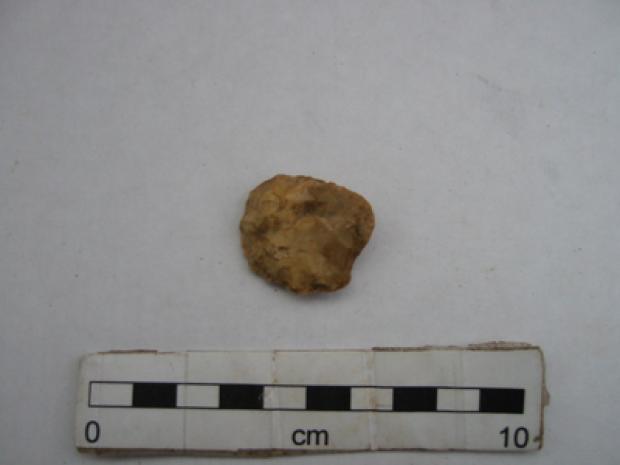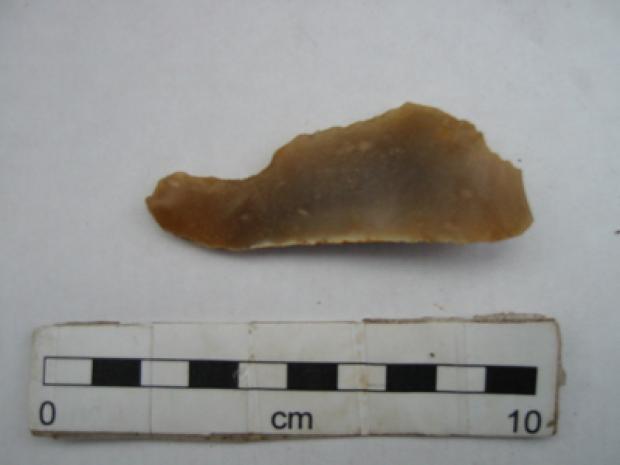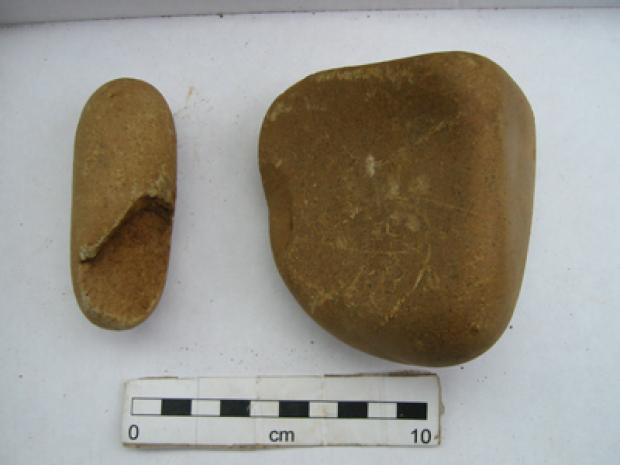Excavation
Roads Service employed an archaeologist to keep a watching brief during early work on the bypass. Whilst there was no sign of the castle or habitation on the floodplain, two important sites were uncovered on a raised gravel beach at Killane north east of Limavady.

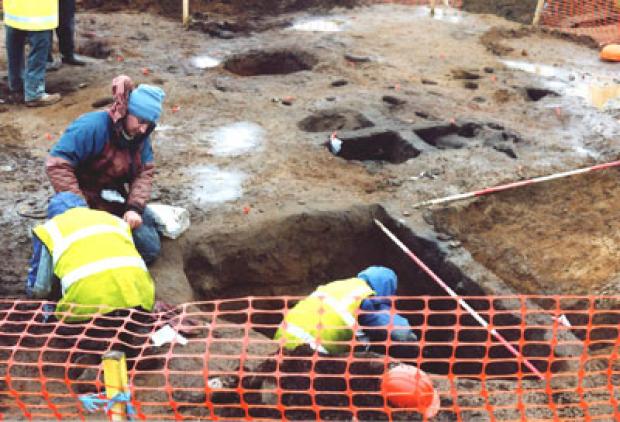
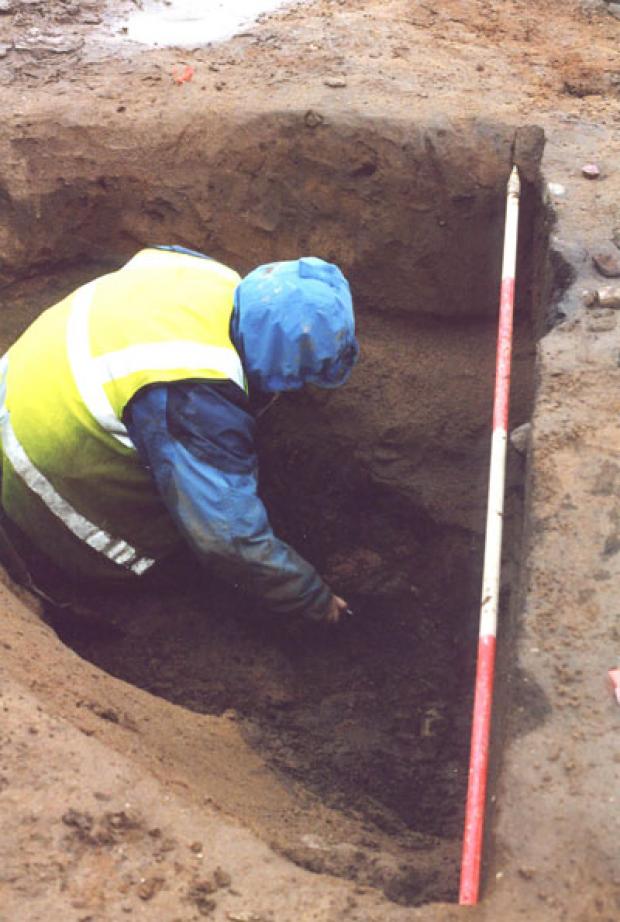
Finds
The first site appeared to be a neolithic (late stone age) habitation site. A few small post-holes and pits were located in one corner of the 7 metre by 4 metre site. The remainder of the site was covered in a charcoal rich occupation layer. A number of artefacts were uncovered including late neolithic flint artefacts (circa 3000 BC), waste flint and flint cores (the fragment of the original flint nodule after all the useable flakes had been removed from it). A hammer stone and anvil stone were also found close by the occupation material.
A provisional interpretation of the site indicates that it was a small building or hut of wooden construction with wattle walls and a thatch roof. It is likely that it was not permanently occupied, rather it may have been a seasonal dwelling occupied during the summer months and early autumn to exploit eels and salmon in the nearby river.
It is possible the second site could date to the later iron age (sometimes called the Christian period) circa 500 to 1000AD when coarse pottery was manufactured and flint artefacts were not totally unknown (although rare). Flint artefacts and a few small fragments of coarse pottery were found during an initial cleanup of the 10 metre square site. One piece of what appeared to be copper slag (waste from copper smelting) was found in one of the hearths and appears likely to be bronze age.
It seems most likely that this was a bronze age building, probably mid to late bronze age (circa 1500 to 500BC), of timber construction. The larger of the two hearths, containing the copper slag, may have been part of a furnace. There were burnt deposits, possibly indicating the line of flues radiating from the hearth. The second hearth was possibly domestic. It is possible that all the features are not contemporary. If the larger hearth was a furnace, it most probably was outdoors, although it is not unknown for metal work to have taken place even in quite small timber buidings.
Updated 6 August 2015
